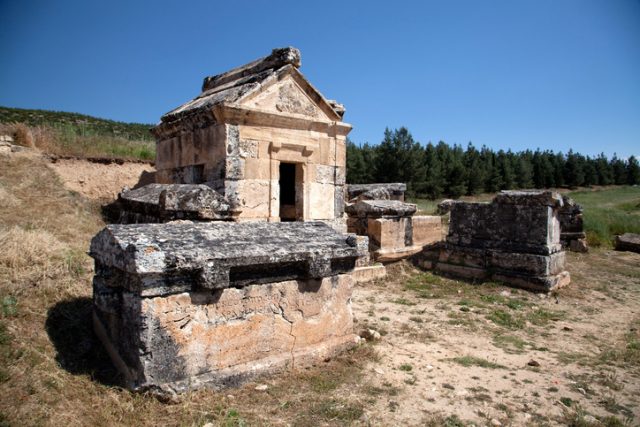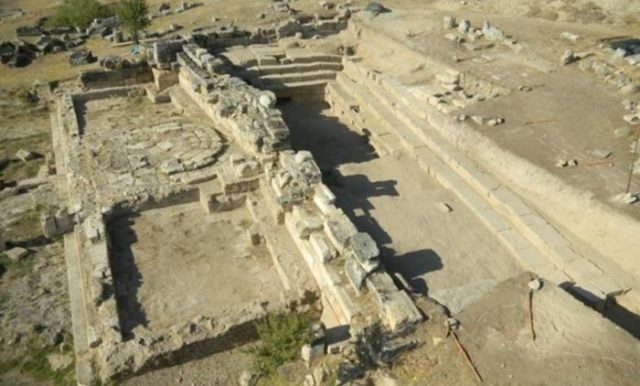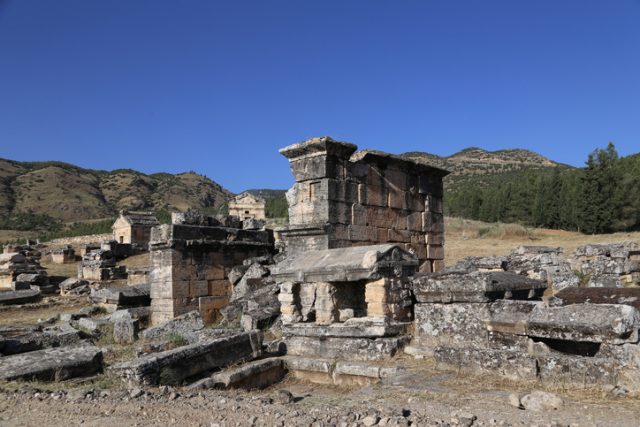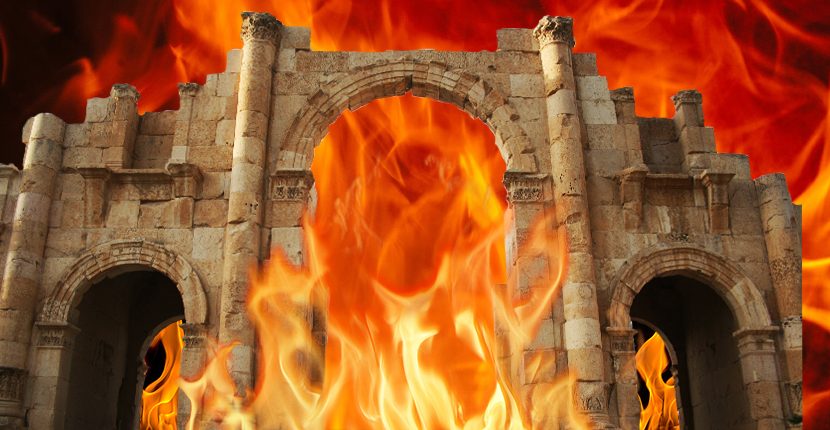In southwestern Turkey, near the town of Pamukkale, there once stood the ancient city of Hierapolis. The settlement, whose name literally means the Holy City, was a site of great religious importance to both the Ancient Greek inhabitants and the local Phrygians of Asia Minor.
Established sometime in the 3rd century B.C., it was also one of the most well-known spas and healing centers of the ancient world. This was due to its thermal springs, which attracted many who were seeking advice from local doctors as well as clerical figures worshiping the cult of the mother-goddess Cybele. In addition, a large concentration of natural gas was present in the nearby hills, where the main religious service was held.
A shrine was built by worshipers and embedded in the cave. Such shrines were called Plutonions or Plutoniums, as they tended to honor Hades, the Greek god of the Underworld and the equivalent of Pluto in Roman mythology.
To appease the ruler of the afterlife, worshipers erected a temple surrounding the cave filled with earth’s vapor which caused the eunuch-priests to hallucinate and sacrificial animals to simply drop lifelessly. The fumes were brought by a thermal spring that runs through the cave, emitting volcanic carbon dioxide.

The remnants of the temple compound next to the city of Hierapolis were discovered in 1965 by a group of Italian archaeologists who made limited excavations on site, noting a grotto framed by a stone doorway and a 30 square feet chamber which was clearly intended for religious rites.
In 2011, Francesco D’Andria, a professor of archaeology at the University of Salento, Italy, continued to examine the findings, leading to the discovery of the Plutonian in question―the one dubbed the Gates of Hell.
The archaeological finding was, in fact, one of many such “Gates of Hell”―caves across the Mediterranean filled with carbon dioxide coming straight from the earth’s core. The Ancient Romans believed that such caves really were portals that connected our world with the one below, inhabited by the dead.
The sacrificial rituals were spectacular events, as nobody doubted the nature of the miracles that tended to happen before the believer’s very eyes. The clergy would lead sacrificial bulls down the grotto, where the animal would succumb from poisoning, while the priests came out unharmed, albeit being a bit dazed.
Related Video:
This was because the carbon dioxide mostly lingered on the floor of the cave, as the gas is slightly heavier than air. This caused the CO2 to form a mist at the cave’s bottom, affecting only animals as their heads were closer to the ground.
The clerical figures controlling the shrine which became a must-see for many religious pilgrims of the time used to sell small birds which would then be thrown into the sacred grotto, after which a “miracle” followed. A famous Greek geographer, philosopher, and historian, Strabo, witnessed one such miracle and noted in his capital work, Geographica:
“Any animal that passes inside meets instant death. I threw in sparrows and they immediately breathed their last and fell.”

As for the priests, they quickly became aware of the ways to avoid suffocation. Strabo also noticed the behavior of such priests during the ritual:
“(The) priests bent down, held their breath, and only went in so far.”
Strabo argued that their immunity was due to their castration, which gave them magical traits, but Hardy Pfanz, a volcanologist, begs to differ. In an interview Pfanz gave to Science magazine in February 2018, the volcanologist gave several scientific explanations concerning the fact that the priests were mostly unaffected by the carbon dioxide responsible for the ends of numerous bulls and sparrows.
Apart from being aware that the fumes had a height limit, they also knew which part of the day was the safest for conducting the rites. Pfanz said in his interview that noon was probably the safest period of the day because the sun’s warmth dissipates the gas. At night the gas becomes highly concentrated making it hard to get near the entrance without being affected, let alone enter the portal to hell.

This is why the sacrificial rites were most probably conducted during the morning or evening hours when the concentration of the gas was the highest. The priests would simply guide the animals such as sheep and bulls into the portal where they would succumb to the fumes.
Francesco D’Andria, the archaeologist responsible for the sudden return of interest in the location disagrees with Pfanz, noting that a number of his findings include ancient oil lamps scattered around the entrance to the grotto, confirming the presumed night activity.
The research conducted in Pamukkale could lead to other archaeological discoveries around Greece and Turkey, where such cults were very popular. This find also offers us a unique insight into the minds of common people of the era of spread-out magical thinking and religious attempts to offer scientific explanations. Even though the emission of toxic fumes is of much less intensity than it was 2,200 years ago, some unfortunate birds still fall prey to the toxic breath of Pluto.
